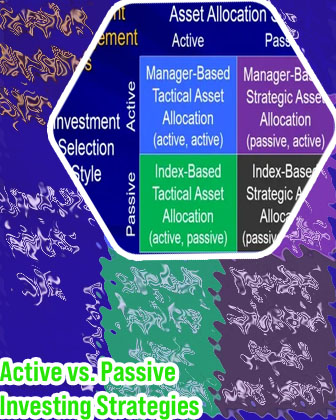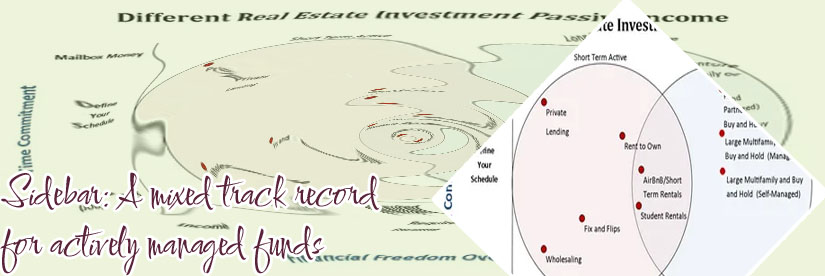|
|
The Advantages of Passive Investing
As discussed, benchmarks are not investible. In practice, the alternative to actively managed funds is to allocate to a passive fund. That being the case, arguably the most important comparison in assessing the attractiveness of active funds is to their passive counterparts. In Figure 3a we show the proportion of active funds that outperformed the median of corresponding passive funds across various time windows. Active passive investing Passive mutual funds eliminate unsystematic risks like stock picking and portfolio manager selection via rule-based investing as per the weight of stocks in the benchmark. Active funds may be relatively riskier depending on the type of Fund. For instance, an active equity fund can carry a higher risk than an active debt fund.
Passive investment and active investment
While passive funds have caught up with the active among U.S. equity funds, active funds continue to hold market share in other asset classes where information and trading are less efficient. Active vs passive investing: why amateurs get fleeced Would you prefer a fund manager to actively manage your money for you or are you happy to let your investments simply track the market? Either way, you need to make sure you understand the difference between active and passive fund management and the relative cost before you get started. 
What is Better, Active or Passive Investing?
Your tax situation will depend on your personal circumstances and we recommend you obtain independent tax advice. Any tax information is based on our understanding of current and proposed legislation and practice. The legislation and practice may be subject to change. Why Advice Matters Passive investing is preferred over active investing due to the following reasons:– The trading volume is lower in passive investing. Consequently, the expenses incurred on trades are also low.– The charges and the fees of the fund manager are almost absent. This is because passive investing need not necessarily require the expertise of fund managers.– The passive investor need not spend efforts on monitoring stock prices consistently. Short-term price fluctuations are not captured since the goal is to make profits in the long run.– The risk of investing in passive funds is lower. One can earn reasonable returns by bearing lower risks than active investing.
Active to passive investing
More and more investors are turning to passive investments to build their portfolios. In fact, 43% of the U.S market is now made up of passive investors. This shift has been driven by a number of factors, including the rise of index funds and the increasing popularity of ETFs. Passive investing offers a number of advantages, such as low fees and broad diversification. As a result, it’s not surprising that so many investors are choosing to go this route. Comparing active and passive investment management Advocates of passive investing focus on the capital market’s ability to generate positive returns over the long run. As a result, passive investing attempts to create wealth gradually, by holding securities over an extended period of time. The strategy has gained tremendous popularity over the last 10 years.
|


